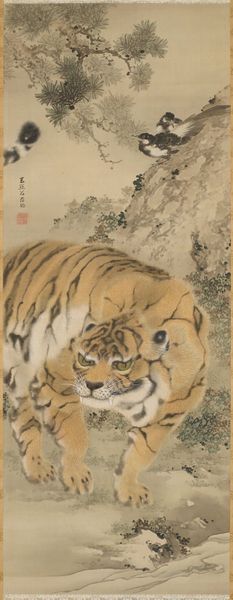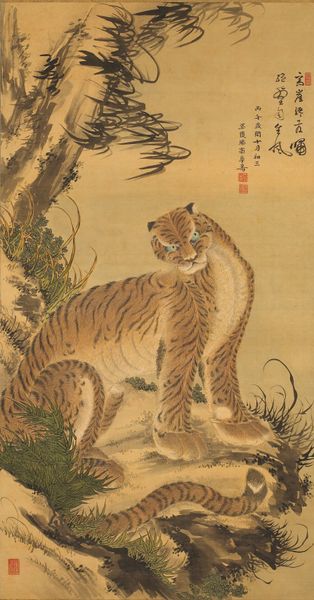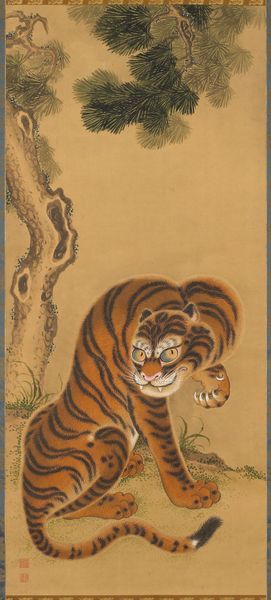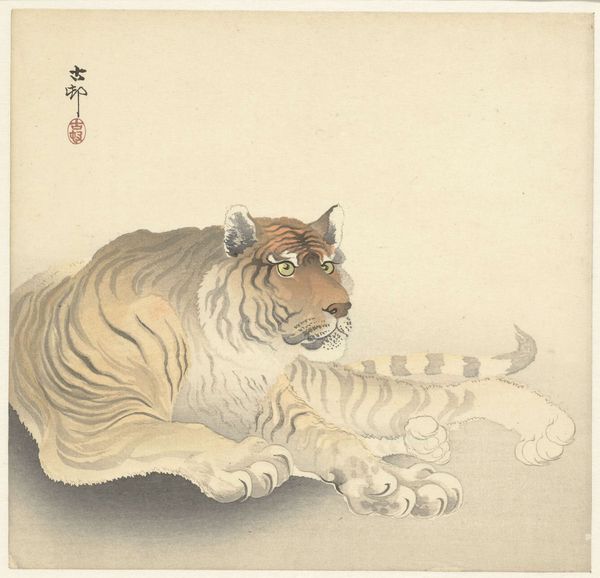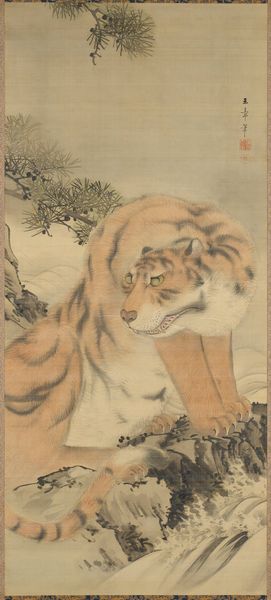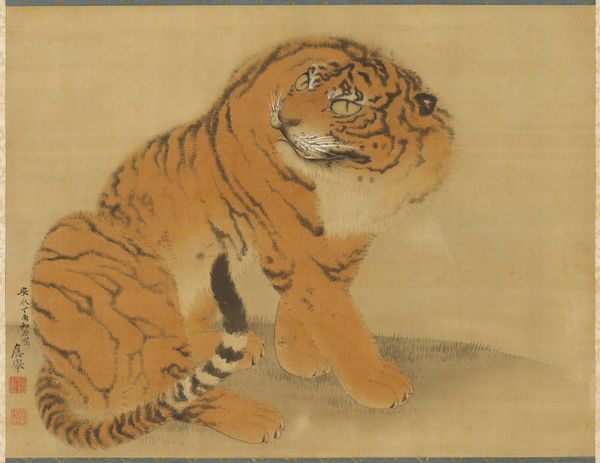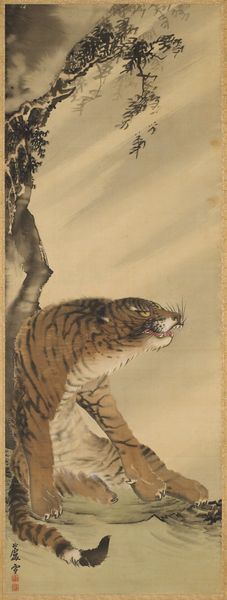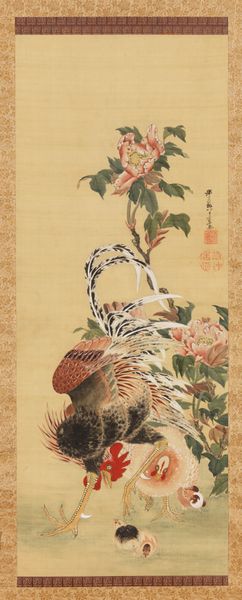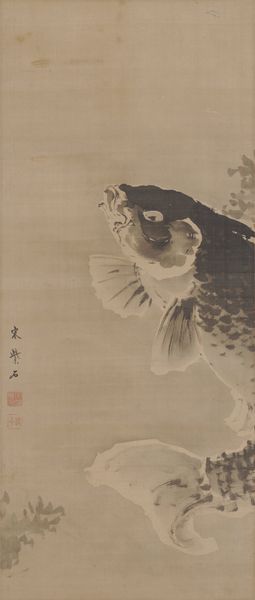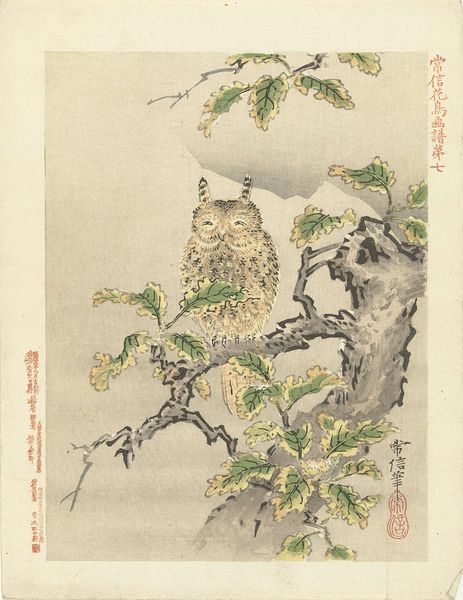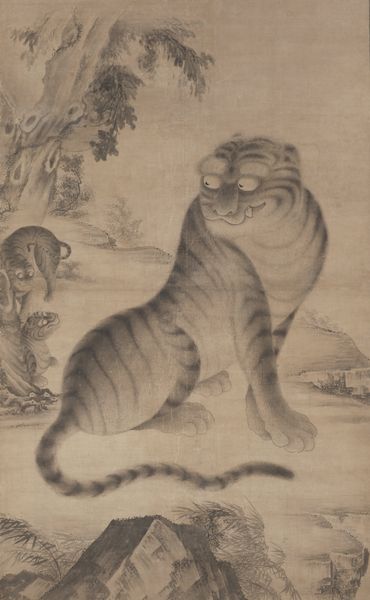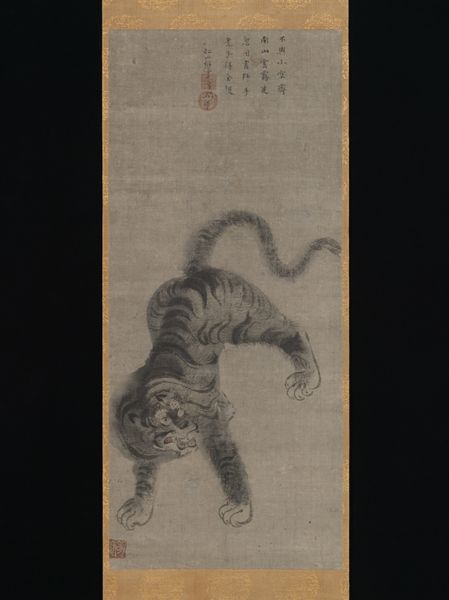
ink
#
portrait
#
asian-art
#
landscape
#
ink
#
orientalism
Dimensions: 46 5/8 x 21 7/8 in. (118.43 x 55.56 cm) (image)76 3/4 x 27 5/16 in. (194.95 x 69.37 cm) (overall, without roller)
Copyright: Public Domain
"Tiger Seated Beneath Rock and Bamboo" was painted by Ganku in the late 18th or early 19th century, using ink and color on silk. Ganku lived during the Edo period, a time of relative peace and prosperity in Japan, but also one of strict social hierarchy and isolationist policies. His artistic lineage can be traced to the Chinese Song dynasty, an influence that reflects the cultural exchange and artistic adaptation prevalent in Japan during this period. Tigers in particular were not native to Japan, making them potent symbols of foreign power and strength, often linked to military prowess and protection. Here, Ganku softens the tiger’s fearsome reputation. Note the tiger's almost playful expression and posture which challenge traditional representations. Does Ganku use the tiger’s foreignness to talk about Japan’s relationship to the rest of the world? In a time of rigid social structures, this painting subtly plays with themes of power, identity, and the negotiation between foreign influence and Japanese tradition. It invites us to reflect on how cultural symbols are adapted and reinterpreted across different historical contexts.
Comments
No comments
Be the first to comment and join the conversation on the ultimate creative platform.
